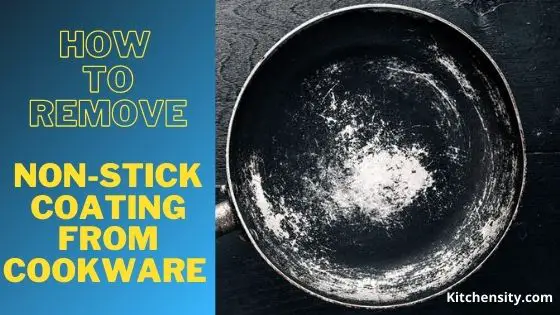Clay cooking pans bring a touch of tradition to your kitchen. Used for centuries in various cuisines worldwide, they offer unique flavors and retain moisture, which modern cookware often can’t replicate.
To use clay cooking pots and pans, first, soak the pan and lid in water for about 15 to 30 minutes before cooking. Preheat the pan gradually over low heat, add ingredients, and cook using medium heat. The porous nature of clay enhances flavors, so experiment with slow cooking, steaming, and baking for delicious and aromatic dishes.
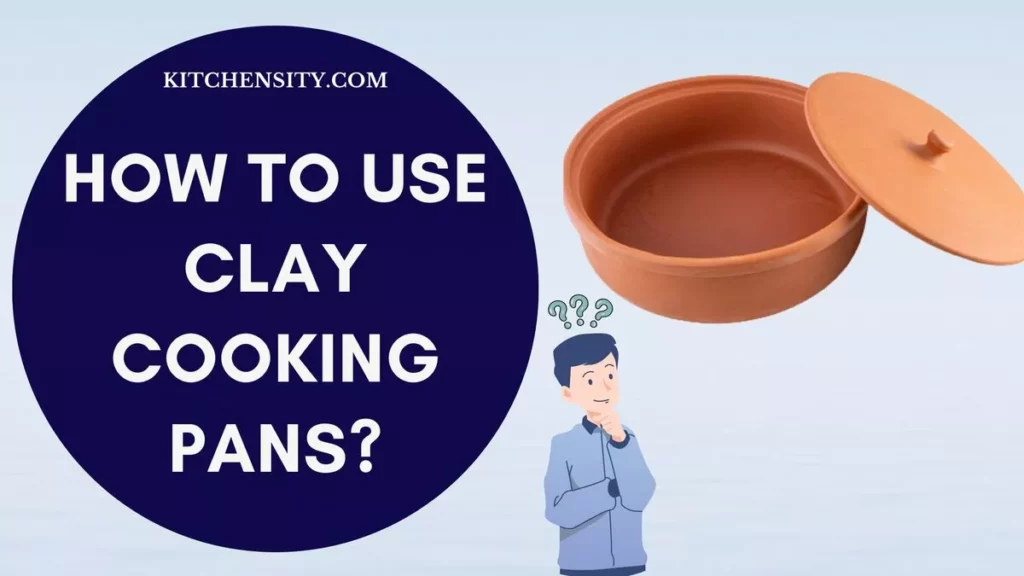
Read below for a step-by-step guide.
Table of Contents
- 1 How To Choose The Right Clay Pots & Pans?
- 2 Step-By-Step Guide To Use Clay Cooking Pots And Pans.
- 3 Cooking Techniques With Clay Pots And Pans.
- 4 How To Manage The Temperature While Cooking In Clay Pans?
- 5 Should Clay Pots Be Soaked In Water?
- 6 Tips And Tricks For Cooking In Clay Pots & Pans.
- 7 Final Thoughts On Using Clay Cooking Pots & Pans.
- 8 FAQs (Frequently Asked Questions).
How To Choose The Right Clay Pots & Pans?
To choose the right clay pots and pans, consider these key factors. Opt for natural, unglazed clay for better cooking, and choose sizes and shapes that fit your needs. Look for even thickness to distribute heat evenly and select pots and pans with sturdy, heat-resistant handles. Consider some reputable brands with a decent budget and choose based on your cooking method preferences.
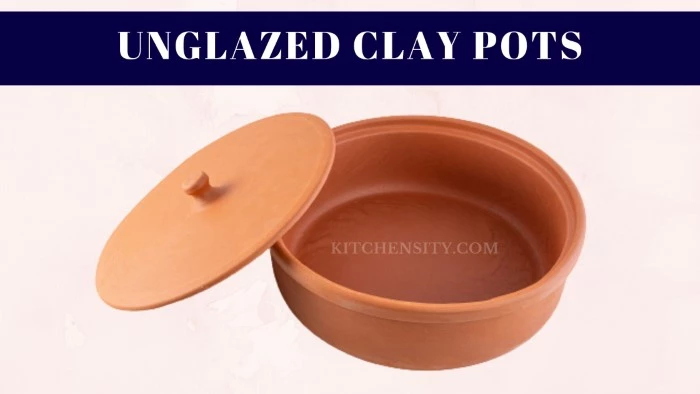
To make the most of this traditional cooking method, here are some key factors to consider when selecting the perfect clay pan for your culinary adventures.
- Opt for pots and pans made from natural, unglazed clay, as they are more porous and better for cooking. Avoid glazed or painted clay, as they may contain harmful chemicals.
- Select pots and pans that suit your cooking needs and fit well on your stove or in your oven. Consider the size of your family or the number of servings you typically cook for.
- Look for pots and pans with even thickness, as this helps distribute heat evenly and prevents cracking.
- Choose pots and pans with sturdy, heat-resistant handles for easy and safe handling.
- Consider your budget and look for reputable brands known for producing high-quality clay cookware.
- Clay pots are versatile and can be used on stovetops, in ovens, and even over open flames. Choose pots and pans that suit your cooking preferences.
- Check if the clay pots require any special care, such as seasoning or pre-soaking before use.
- Look for reviews and recommendations from other users to get an idea of the performance and durability of the clay pots and pans you’re considering.
Also Read – Glazed Vs Unglazed Clay Pots
Step-By-Step Guide To Use Clay Cooking Pots And Pans.
Using clay cooking pans requires care and attention, but the results are well worth the effort. Here’s a step-by-step guide to using clay cooking pots and pans:
- Step 1: Season the pot by soaking it in water for a few hours, then rub the interior with a clove of garlic and some oil, and let it sit overnight. Rinse the pot thoroughly before use.
- Step 2: Preheat the pot slowly over low heat before adding ingredients to avoid cracking due to sudden temperature changes.
- Step 3: Use low to medium heat settings on your stove, as clay pots retain heat well and don’t usually need high heat.
- Step 4: Add your ingredients once the pot is preheated, using wooden or silicone utensils to avoid scratching the pot.
- Step 5: Stir occasionally to prevent sticking, and monitor your food as it cooks.
- Step 6: Remove the pot from the heat once your food is cooked, and let it cool slightly before serving.
- Step 7: Clean your clay pot with warm water and a soft sponge, avoiding harsh chemicals or abrasive materials. Store it in a dry, airy place to prevent mold growth.
Also Read – Can Clay Pots Be Used On The Gas Stove?
Cooking Techniques With Clay Pots And Pans.
Clay pots and pans offer a range of cooking techniques that can elevate your culinary creations and infuse your dishes with unique flavors. Here are three cooking techniques that work exceptionally well in this earthenware.
1. Slow Cooking
Clay pots and pans excel at slow cooking because they retain and evenly distribute heat. This technique is perfect for braises, stews, and soups. Here’s how to slow cook with a clay pan:
- Start by layering your ingredients in the clay pan. Begin with aromatics like onions and garlic.
- Add your choice of protein, whether it’s meat, poultry, or legumes.
- Pour in your preferred liquid, such as broth, wine, or water.
- Season the dish with herbs and spices.
- Place the lid securely on the pan.
- Cook over low to medium heat, allowing the flavors to meld together slowly. The porous clay will trap moisture, resulting in tender and succulent dishes.
2. Steaming
Steaming in a clay pan is an excellent way to preserve vegetables and seafood’s natural flavors and nutrients. Here’s how to steam using a clay pan:
- Begin by soaking the clay pan and lid in water for about 15 to 30 minutes.
- Place a steaming rack or a layer of heat-resistant vegetables like sliced carrots or cabbage at the bottom of the clay pan.
- Arrange the vegetables or seafood you want to steam on top of the rack.
- Season lightly with salt and your choice of herbs.
- Cover the pan with the lid and cook over medium heat. The trapped steam will gently cook the ingredients while maintaining their textures and flavors.
3. Baking
Clay pans are also perfect for baking various dishes, from bread to casseroles to desserts. The even heat distribution in clay pans results in beautifully browned crusts and perfectly cooked interiors. Here’s how to bake using a clay pan:
- Preheat your oven to the required temperature.
- Grease or line the interior of the clay pan as needed, depending on the recipe.
- Prepare your batter or dough and pour it into the clay pan.
- Place the pan in the preheated oven and bake according to the recipe instructions.
- The clay pan’s heat retention properties will ensure even baking and a delightful texture.
Also Read – Disadvantages Of Cooking In Clay Pots
How To Manage The Temperature While Cooking In Clay Pans?
To manage the temperature while cooking in clay pans, start by preheating the pan slowly over low heat and gradually increasing the temperature to avoid thermal shock. Use low to medium heat settings during cooking, as clay pans retain heat well. Avoid sudden temperature changes by letting the pan cool down gradually and avoid placing it on cold surfaces or under cold water when hot. Stirring frequently helps distribute the heat evenly, preventing burning. Monitoring the cooking process and adjusting the heat as needed will help you maintain the desired temperature and prevent cracking or uneven cooking.
According to FoodNetwork.com “Using clay cooking pots and pans can be a transformative experience in the kitchen. The porous nature of clay allows for gentle, even cooking, resulting in dishes that are not only delicious but also infused with unique flavors.”
Should Clay Pots Be Soaked In Water?
Yes, clay pots should be soaked in water before use, especially if they are unglazed. Soaking helps to prevent the pots from cracking when exposed to heat. Here’s how to do it:
- Before the first use, immerse the clay pot in water for about 30 minutes to 1 hour. This allows the clay to absorb water and reduces the risk of cracking during cooking.
- For subsequent uses, you can soak the clay pot for 15-30 minutes before cooking. This helps to maintain the moisture content of the clay and prevents it from becoming too dry and brittle.
- After soaking, drain the excess water from the pot and allow it to air dry completely before using it for cooking.
Does Food Stick To Clay Pots?
Yes, food can stick to clay pots, especially if they are not properly seasoned or if the heat is too high. To prevent sticking, it’s important to preheat the clay pot slowly, use low to medium heat settings, and ensure that the pot is well-seasoned before cooking. Using a little oil or butter can also help to prevent sticking.
Also Read – Different Types Of Clay Pots For Cooking
Tips And Tricks For Cooking In Clay Pots & Pans.
Cooking in clay pots and pans can be a delightful experience, offering unique flavors and textures to your dishes. Here are some tips and tricks to enhance your cooking.
- Preheat clay pots slowly to prevent cracking.
- Use low to medium heat settings for even cooking.
- Soak the pot before first use and occasionally after that.
- Season the pot with oil and garlic for enhanced flavors.
- Cook dishes with plenty of liquid for best results.
- Stir occasionally to distribute heat evenly.
- Monitor cooking to prevent burning.
- Use wooden or silicone utensils to avoid scratching.
- Clean with warm water and a soft sponge.
- Store in a dry, airy place to prevent mold growth.
Also Read – Best Clay Pots For Cooking
Final Thoughts On Using Clay Cooking Pots & Pans.
Using clay cooking pots and pans can elevate your cooking experience by imparting unique flavors and textures to your dishes. The porous nature of clay infuses dishes with authentic flavors, creating a symphony of taste and aroma.
By following simple tips like preheating slowly, using low to medium heat, and soaking the pot before use, you can enjoy the benefits of cooking with clay while avoiding common pitfalls like cracking or uneven cooking. With proper care and maintenance, clay pots can last for a long time, providing you with delicious meals and a connection to culinary traditions from around the world.
Also Read – How To Seal A Clay Cooking Pot?
FAQs (Frequently Asked Questions).
-
How Do You Cook With Clay Cookware?
To cook with clay cookware, soak it in water before use, then preheat gradually over low heat. Add ingredients, cook over medium heat, and enjoy the enhanced flavors and gentle cooking process unique to clay.
-
Can I Use Clay Pans On An Induction Stovetop?
No, most clay pans are not compatible with induction stovetops because clay is not a magnetic material. Induction stovetops require magnetic cookware, such as cast iron or stainless steel, to generate heat.
-
Can I Marinate Food Directly In The Clay Pan?
Yes, you can marinate food directly in a clay pan. The porous nature of clay allows it to absorb flavors, enhancing the taste of your dish. However, be mindful of acidic marinades, as they can potentially damage the clay over time.
-
How Do I Know If My Clay Pan Is Lead-Free?
To ensure your clay pan is lead-free, look for products that are certified as lead-free by reputable manufacturers. You can also check for any labeling or information provided by the manufacturer regarding the materials used in the production of the clay pan.
-
Can I Use Soap To Clean My Clay Pan?
Yes, you can use mild dish soap to clean your clay pan. However, avoid using harsh chemicals or abrasive scrubbers, as they can damage the porous surface of the clay. Rinse the pan thoroughly after washing to remove any soap residue.
-
Can I Use Clay Pans For Deep Frying?
While clay pans can be used for shallow frying, they are not recommended for deep frying. The high temperatures required for deep frying can cause the clay to crack or break. It’s best to use a deep fryer or a pot specifically designed for deep frying.
Katrina Smith is a seasoned expert with over 25 years of experience in all things related to cooking and the kitchen. As an avid cook and kitchen enthusiast, she is passionate about sharing her knowledge and expertise on cookware, kitchen appliances, kitchen tips, and kitchen staples.
Through her articles and reviews, Katrina aims to inspire and help others improve their cooking skills, experiment with different ingredients, and invest in quality cookware and appliances.

![How To Season And Clean Cast Iron Cookware? [4 Effective Ways] 4 How To Season And Clean Cast Iron Cookware](https://www.kitchensity.com/wp-content/uploads/2020/06/How-To-Season-And-Clean-Cast-Iron-Cookware.jpg)
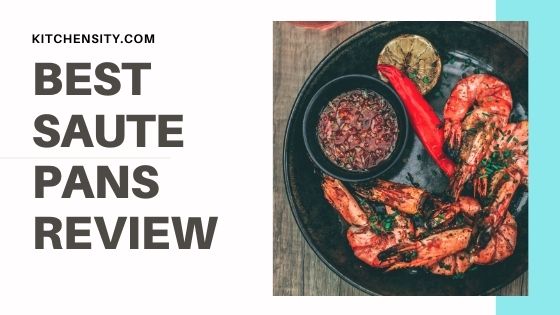
![Stainless Steel Vs Nonstick Vs Ceramic Cookware Set [An Ultimate Guide 2023] 6 Stainless Steel vs Nonstick vs Ceramic Cookware Set](https://www.kitchensity.com/wp-content/uploads/2019/09/Stainless-Steel-vs-Ceramic-vs-Nonstick-Cookware-Sets-e1621083482728.jpg)
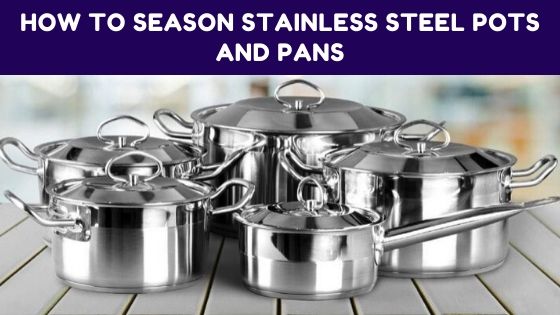
![What Pans Can You Use Cooking Spray On? [Ultimate Guide] 8 Types of pans with which cooking spray can be used](https://www.kitchensity.com/wp-content/uploads/2023/02/What-Pans-Can-You-Use-Cooking-Spray-On.jpg)
